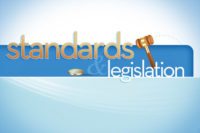The 2012 ACEEE State Scorecard shows that the top 10 energy-efficiency states are Massachusetts (in its second year atop the rankings), California, New York, Oregon, Vermont, Connecticut, Rhode Island, Washington, Maryland, and Minnesota.
Massachusetts Gov. Deval Patrick said, “We are proud to have maintained the No. 1 spot in the nation because of our continued focus on innovation and investments in energy efficiency. Our Green Communities Act is cutting our dependence on imported energy sources, creating jobs, and leading the way to a more sustainable energy future for Massachusetts.”
Ben Foster, ACEEE senior policy analyst and state scorecard lead author, said, “We find that more and more states are taking action to improve energy efficiency and move up in our rankings, and it’s no secret why they want to accomplish that: energy efficiency is a pragmatic and effective strategy for promoting economic growth, creating jobs, and securing environmental benefits. The scorecard serves as a benchmark that encourages states to continue strengthening their commitment to energy efficiency.”
State Benchmark
The State Energy Efficiency Scorecard benchmarks all 50 states and the District of Columbia according to the policies and programs that encourage the efficient use of energy in many sectors of the economy.
The report examines six of the primary policy areas in which states typically pursue energy efficiency: utility and public benefits programs and policies; transportation policies; building energy codes; combined heat and power (CHP) policies; state government-led initiatives around energy efficiency; and appliance and equipment standards. The baseline year against which ACEEE assessed policy and program changes varies by policy category. Policy scores are based on policies in place as of September 2012, said ACEEE.
Final Scores
The 10 states most in need of improvement (starting with last) are Mississippi, North Dakota, West Virginia, Wyoming, South Dakota, Alaska, Kansas, Missouri, Louisiana, and Nebraska.
The three most improved states are Oklahoma, Montana, and South Carolina. All three states significantly increased their budgets for electric efficiency programs in 2011. Oklahoma put in place natural gas efficiency programs for the first time in 2011, and Montana dramatically increased its budgets for these programs. Other states making significant progress this year include Arizona, Michigan, North Carolina, and Pennsylvania, all of which increased budgets for energy efficiency under their statewide energy-savings goals.
Oklahoma Gov. Mary Fallin said, “As governor of Oklahoma, making government smaller, smarter, and more efficient is among my top priorities. Energy inefficiency wastes natural resources and tax dollars that could otherwise be used for essential services like education, transportation, and public safety.
“Thanks to efficiency programs by our state utilities, state tax incentives for more energy-efficient construction, and our state plan to achieve 20 percent energy savings by 2020 among all state agencies and entities, Oklahoma is one of the most-improved states on this year’s ACEEE scorecard. With innovative efficiency and conservation policies, Oklahoma is leading the way on energy conservation.”
Other Key Findings
Other findings in the latest ACEEE State Energy Efficiency Scorecard include the following:
• Utility budgets for electric and natural gas efficiency programs rose to almost $7 billion in 2011, a 27 percent increase over a year earlier. Of this, $5.9 billion went to electric efficiency programs, with the remaining $1.1 billion for natural gas programs.
• Nearly one-half of the states (24) have adopted and adequately funded an Energy Efficiency Resource Standard (EERS), which sets long-term energy savings targets and drives investments in utility sector energy-efficiency programs. The states with the most aggressive savings targets include Arizona, Hawaii, Maryland, Massachusetts, Minnesota, New York, Rhode Island, and Vermont.
• Ten states have adopted energy-efficiency codes for new building construction that exceed the IECC 2009 or ASHRAE 90.1-2007 codes for residential and commercial building construction. Two additional states, Maryland and Illinois, have advanced even further by adopting the most recent and most stringent code for residential construction, the 2012 IECC.
For more information on the scorecard and state rankings, go to http://bit.ly/Q1lGGA.
Publication date: 10/22/2012






